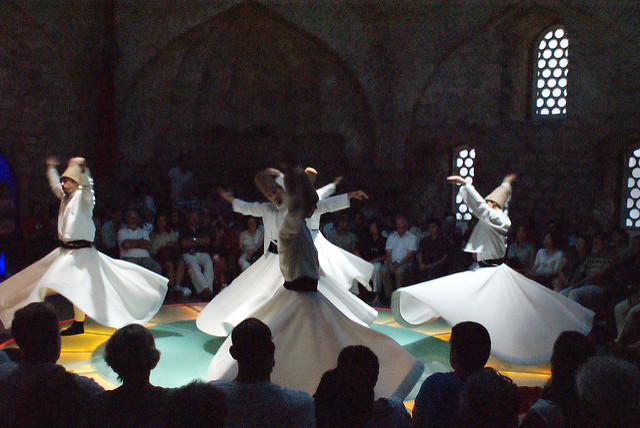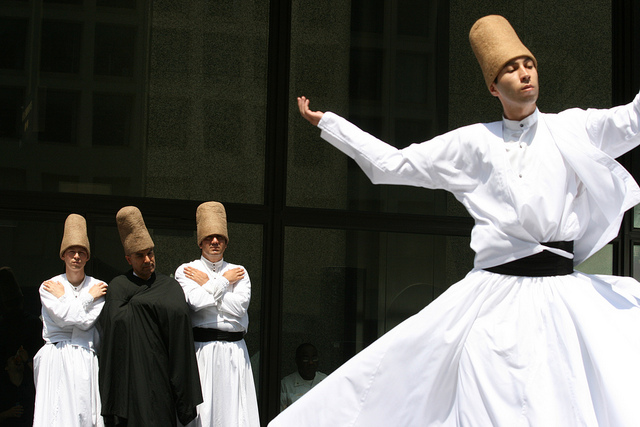Aside from the hundreds of years of history, the beautiful landscapes and the welcoming people, many tourists go to Turkey with a more specific goal in mind — to see the Whirling Dervishes. To understand the internationally admired twirling dance done by this group of religious paragons, one has to go back to the roots of its creation.
This special form of whirling started during the time of Mevlana Jalaluddin Rumi, who lived from 1207–1273. The whirling dance is part of the Sema ritual, which is a Sufi tradition of Islam. The Sema ritual reflects the human journey and the whirling is a symbolic representation of the revolutions we are part of as humans. The electrons, protons and neutrons inside each cell revolve, the blood revolves through our bodies and being born of the earth and then returning to it in death is another sort of revolution. So, as the semazen revolve, they meditate on Allah and some are said to fall into a sort of religious trance during the ceremony.
Everything in the dance has meaning, from the clothes they wear to the body positions created throughout. Whirling dervishes have their right hands positioned palm up to receive God’s beneficence and their left hands palm down in order to pass God’s beneficence to other people. The white robes are the symbolic shroud of the ego, while the camel skin hat is the ego’s tombstone. All of these elements are key to combining the three core tenants of human nature — heart, mind and body — which is another goal of the ritual.
Now that the history and symbolism of the whirling dervishes has been slightly demystified, the question becomes where can you go in Turkey to see this stunning ceremony? The best place to see the dervishes is in Konya where the Mevleviye order was founded, but other exhibitions can be found throughout the country. Istanbul has a couple of different options, including the Galata Mevleviye Museum where the ceremony is performed on Sundays at 5 pm or the Hodjapasha Dance Theater which takes place in a 15thcentury Turkish bath every Tuesday, Thursday and Saturday.
Outside of Istanbul, Izmir located on the Aegean Sea also provides an opportunity to take in this religious dance. The Izmir Semazens group even has whirling dervish groups for women, so check their website or find them on Facebook to learn about performance times. The other city known for whirling dervish performances is Cappadocia in Central Turkey. Turkey holidays aren’t complete without seeing this iconic celebration of religion and local culture, so don’t miss out!
Images by David Spender and Quinn.anya, used under Creative Commons license



Be First to Comment